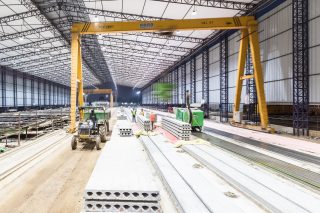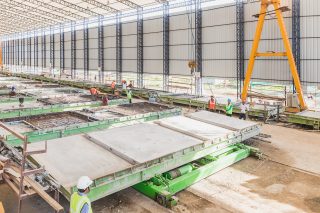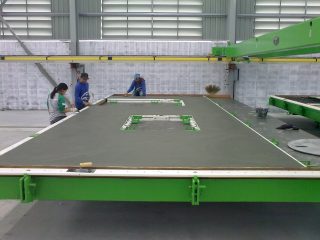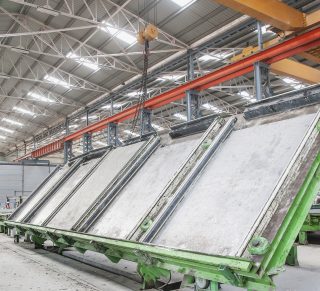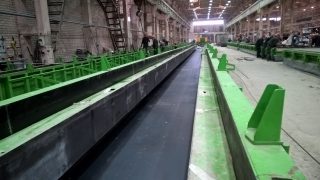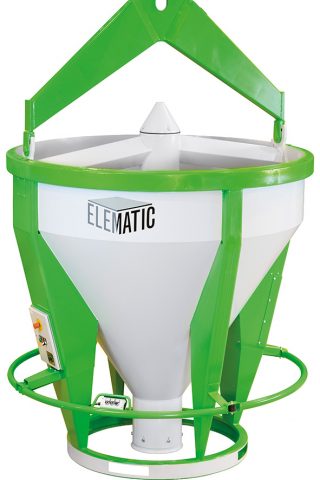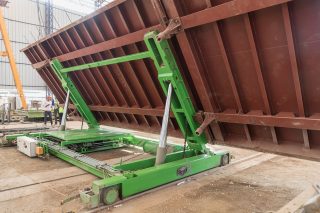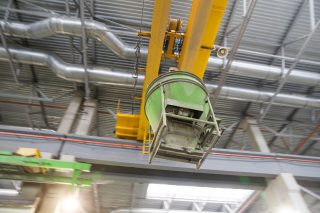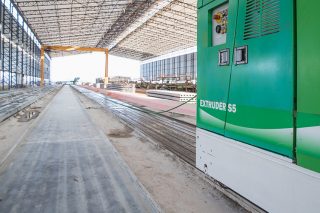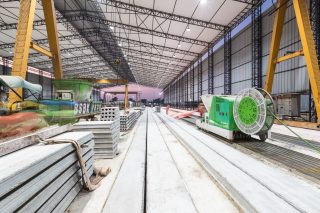When to go for a mobile precast plant?
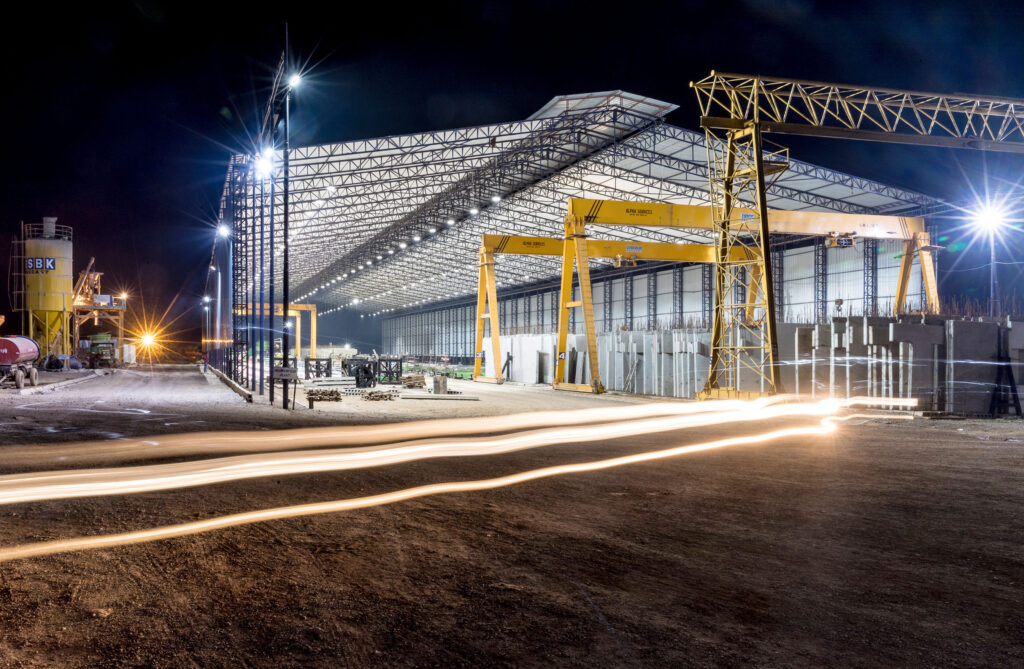
Mobile precast concrete plants – or portable plants – are attracting investors because of their increased flexibility compared to stationary precast concrete plants. But flexibility does not come without compromises.
What is mobile?
By definition, when something is mobile, it is not fixed in one place as it is capable of moving or being moved easily. The expression of a mobile precast plant may be conveying the impression of an installation in motion. However, factories producing massive concrete products for buildings are of course not on the road – at least not very often. However, all machinery, equipment and foundations of a mobile precast concrete plant are pre-designed to eventually be relocated from the initial site location and hit the road towards the next project site.
How to go mobile?
Mobile plants are designed to produce precast concrete parts for a specific construction project according to a fixed schedule. Layout of a portable plant is customized according to available land area and capacity requirements. A mobile plant with its relatively small footprint is often a lengthy period of time in one location as it usually takes months, or even years to complete construction projects.
After successful completion of the project, the mobile plant is disassembled. All machinery, molds and equipment are transported to next location, re-used, and re-installed to serve a new project.
Depending on factory setup, mobile plants are generally producing similar types of products as in stationary factories. Typical products are insulated, load-bearing sandwich walls, solid slabs, hollow core slabs and staircases.
Writer

Curt Lindroth
Area Sales Director, Elematic
Let others enjoy this blog too!
When to consider a mobile plant?
If you are an experienced precast producer, the mobile plant may represent considerable savings in time and money when producing precast concrete products close to a building site located in a distant region. Exceedingly long, uneconomical transport distances represent risks in the form of delays and quality issues as slabs may be damaged due to poor roads. The investment may be worth considering especially if raw material is available in the close vicinity.
In case you have a role as builder or contractor, a purpose-oriented mobile plant is a very good solution when entering the precast concrete business with a building project at hand. After installation of the mobile plant, you are not depending on others delivering precast concrete elements in time as you will have your own, industrial manufacturing close to the construction site. However, all companies new to prefabrication may need some talent acquisition.
A purpose-oriented mobile plant is a very good solution when entering the precast concrete business with a building project at hand.
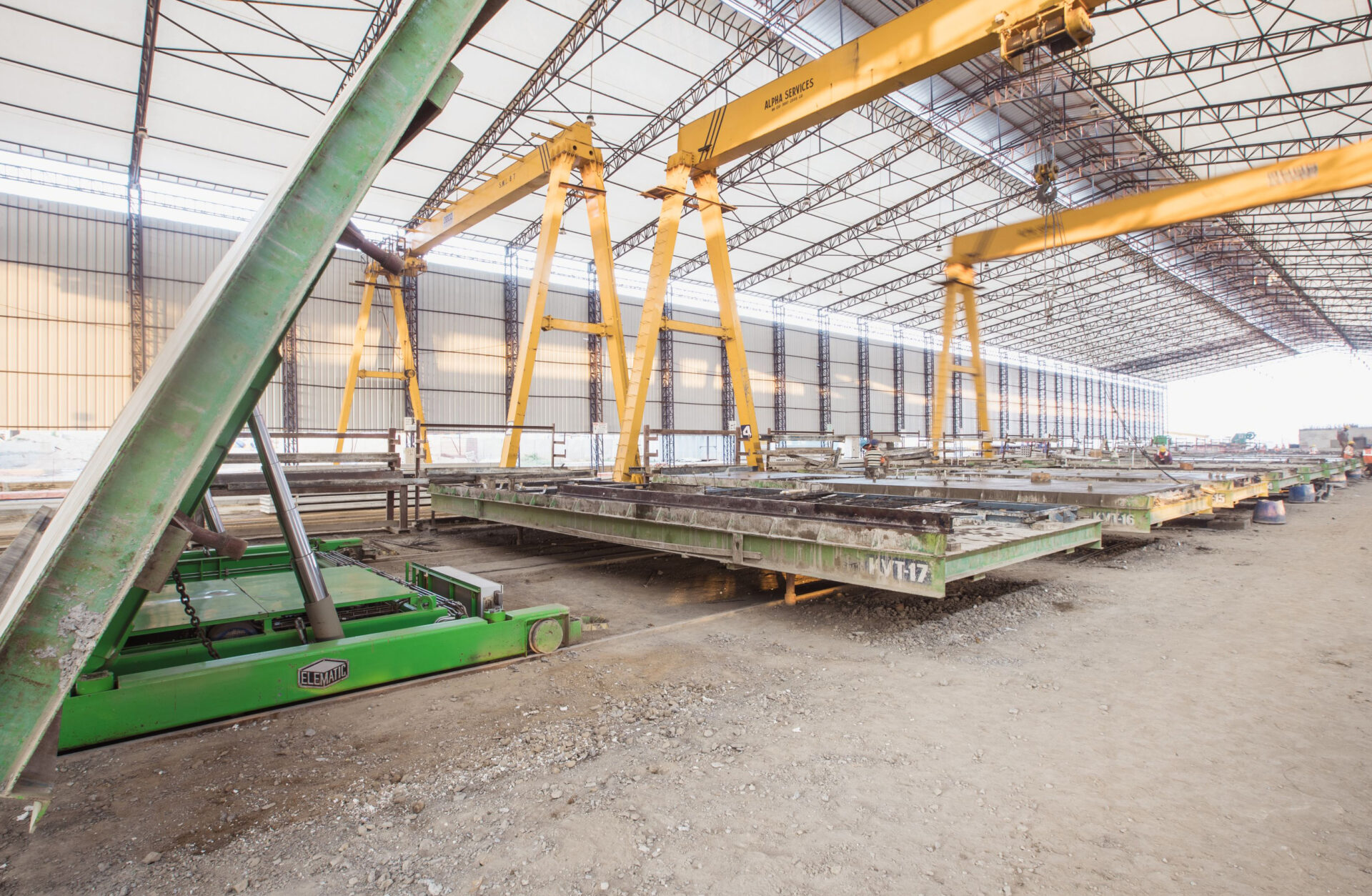
Set up a mobile precast plant when it grows your business
According to estimations made by experts, a larger part of construction companies only win about 10 to 20% of the projects they offer. As a simple conclusion, increased number of quotations may bring more projects. There are of course other options in growing the business, for example by aiming at new, bigger projects. Overall, big projects require risk management and knowledge to accurately estimate, prepare and deliver the project from bid to handover. Successful completion of projects is raising the visibility and status of any businesses.
Investing in a mobile plant may be an opportunity to expand your business. The mobile plant may be an excellent alternative as a relatively low investment and as an extension to your existing precast concrete plant. Together with a building project at hand, it may even represent an opportunity to enter the world of precast concrete construction.
In both cases, when choosing to set up a mobile plant, it is advisable to consult experts in the business, focus on design, evaluate investments, and make wise decisions to ensure successful start-up. Efficient management and project planning solve most issues related to setting up a new mobile plant in a distant area.
Click here for an example of a successful precast project.
Read more about our molds
Going mobile does have limitations
There are certainly challenges in managing new, temporary mobile plants while at the same time targeting same production quality and precision of precast concrete products as reputable stationary precast concrete plants, which have been running for a long time in one location. And then there is down-time during the estimated four to eight weeks’ time when moving the mobile plant from one site to another.
Another downside in choosing a mobile plant is the limitation in the type of production lines which are adaptable for mobility. Production lines in a mobile plant are typically quite manually operated. Concrete is usually distributed manually using gantry cranes in production, without automation. Advanced production lines including automation, circulation lines and shuttering robots need stationary installations.
On the other hand, a mobile precast plant as a temporary factory setup can often be installed and operated with less processes for licenses and permissions. Then again, the portable plant can any time be extended into a stationary factory after solving possible land issues and obtaining necessary permissions.
Here’s some further readings about how to establish a precast concrete plant:
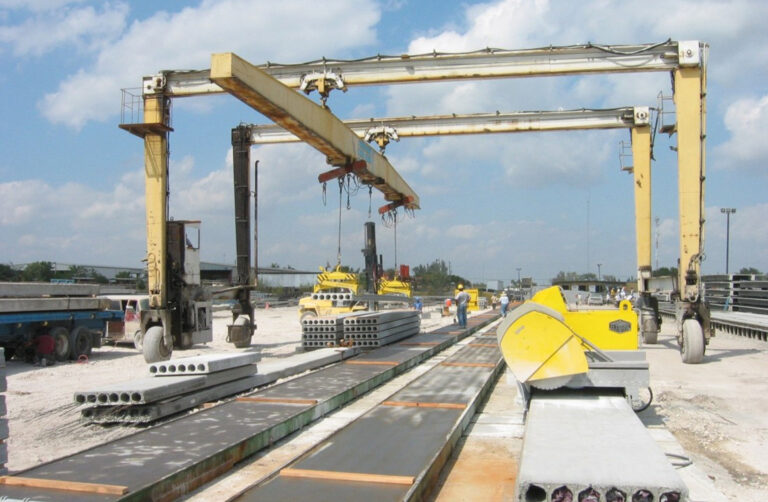
A short story from real life
A company won a tender for a big project which required building design, infrastructure and needed to be completed the project within a time schedule of only 36 months. The turnkey project included design and construction. After evaluation of the scope and taking the short schedule into consideration, traditional construction was not possible and therefore ruled out. In addition, compared to traditional methods, quality of precast concrete construction was known to be superior. Using precast, buildings are better built and completed in half the time compared to traditional construction.
When winning the tender, the company management was not very aware of precast concrete construction. After collecting information by joining seminars and attending international exhibitions, the company representatives visited actual precast plants and construction sites to find out what types of machines and solutions are available for a precast concrete plant, which was to be installed in only six months’ time about two kilometers from the building site.
Read more about the case or watch video below!
